So this is the first real Garden Challenge or Graden Diary that I have done. I have received some great curation from @gardendairy on some of my past gardening and farming posts but I have not played by the specific rules yet of a challenge or diary and I though I would try to do better this week.
This weeks challenge is insects and trust me they are very much a challenge I have been having lately.
Last season it was beetles on my pumpkins and aphids on my basil. This season we are seeing some new suspects and an all new level of challenges. I am trying to do everything organic and with respect to pollinators so I am avoiding any chemicals and dropping any nukes. But I must admit I am frustrated and losing the war.
So far I have been trying to manage things with by spraying a combination of neem oil, citronella and soap. I see moderate results with some things but I also have to admit that I am not doing it regularly enough. I am also running low on these supplies and they can be expensive so I am going to try some other options.
Suspect #1:

This big ass greedy bastard looks like he is straight off of Alice and wonderland smoking some hookah. I noticed him last week and this type is not a normal occurrence and the first I have seen of this type. There are many butterflies and moths that come around which is great for pollination which makes for a lot of varieties of caterpillars. You can see that this one single handed chopped a whole half of a basil leaf. It got hand picked and met its demise under my shoe.
Suspect #2:
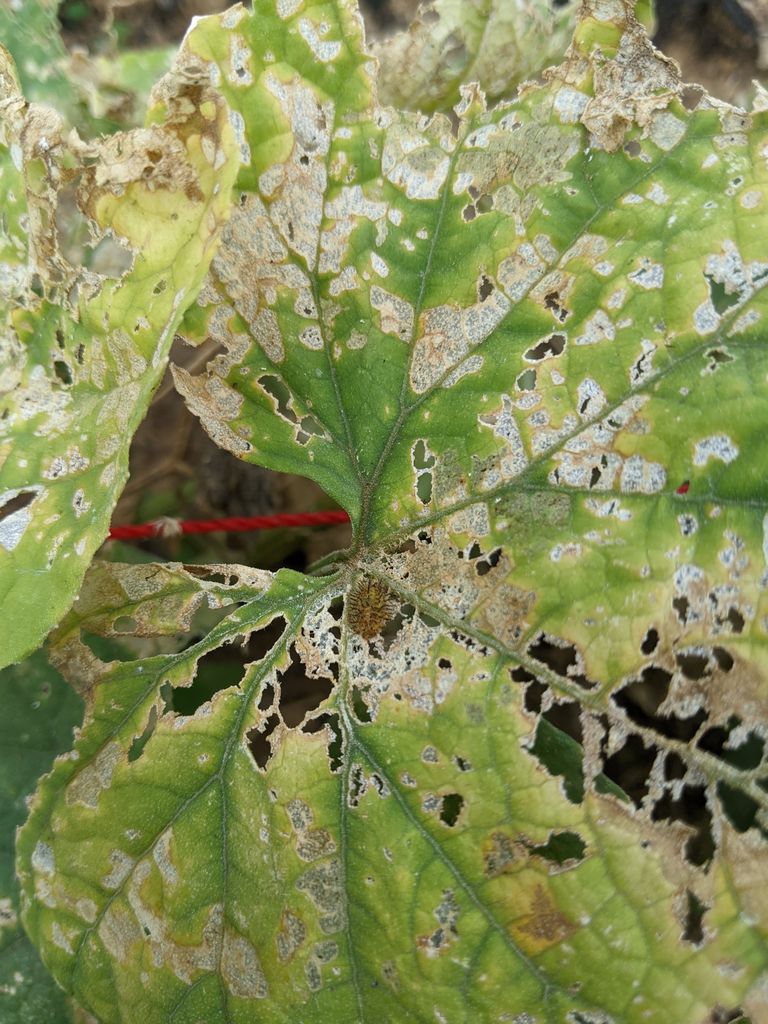
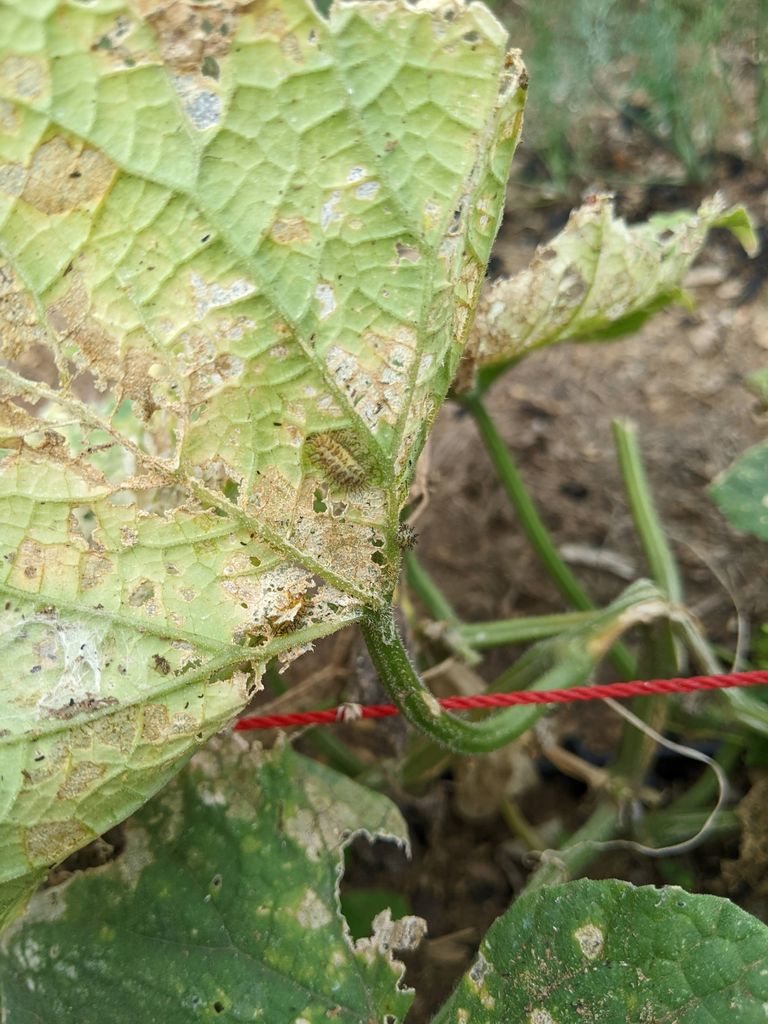
These ones have been a struggle since day #1 with my cantaloupe and cucumber. I thought I had it handled at one point and my cantaloupe started to recover but now as of last week I am seeing a new resurgence of them. I have not yet identified this variety of critter yet. But they very quickly turn the leaves into Swiss Cheese.
Well I just looked it up and it looks to be a type of leaf miner.
Suspect #3
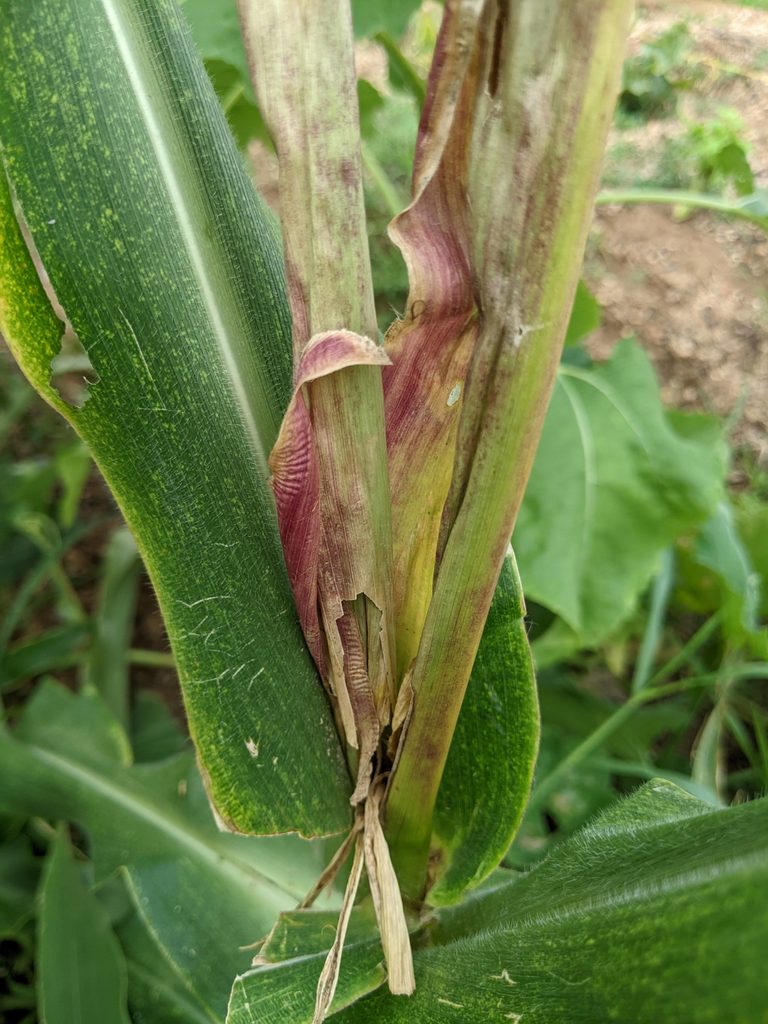
Here is the aftermath on the top of a corn of the Fall Army worm. I do not have a picture of the phase when they are out and about on the plants.
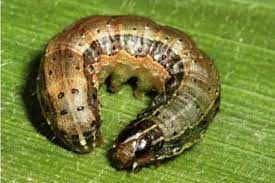
Source https://www.gardja.org/fall-army-worms-hit-11-districts-upper-west-region/
This is the newest asshole on the block and seems only to have been introduced to Ghana in 2017. This is the first season I am having a big problem with it. And I am seeing from our Nigerian brothers it is quite serious for them also.
They chop the whole tops of the corn plant and seem to get into the stem. I am now having corn falling over at the base when the wind blows. They are very adaptive to building resistance to chemicals. Farmers in other parts of Africa have found that a pepper solution works well. Also putting soil in the top of the corn plant while it is still small and uninfected. The other method is a bacteria called BT (long name forgotten) that can be sprayed. It is a bacteria that is found in soil and I understand it can be quite effective. I have not wanted to go this far yet because some BT formulations are toxic to pollinators also including bees. I also don't know where to get it in Ghana yet.
I am also blaming this guy for a lot of my seed failure as I will see sprouts one day and then it is like nothing has come up the next day.
Suspect #4

To me this looks like the Japanese Beetle. I need to do more research and see how I can combat this one.
Suspect #5
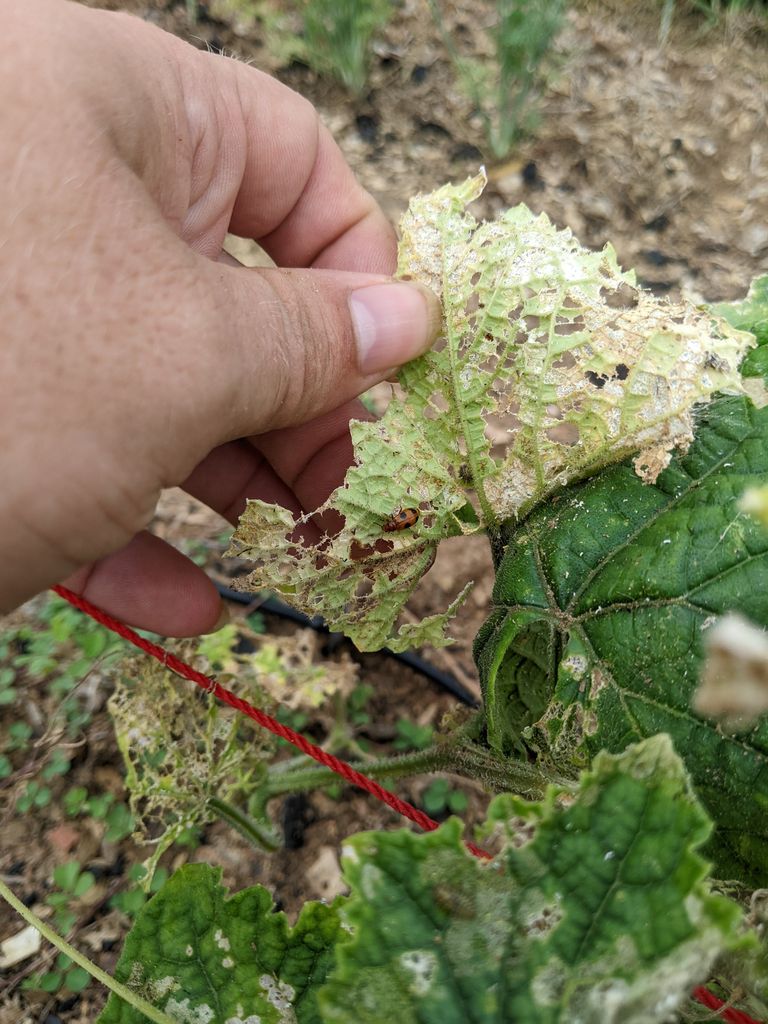
This is a new one that I saw just the other day. I have not started research on this beetle yet.
Suspect #6

This guy is beautiful but another heavy eater in the garden. As for the grass hoppers I am sure they are part of the problem but I have not noticed as much wide spread affects from them.
Any organic affordable solutions are helpful and feel free to drop them in the comments.
You mention neem spray - can you grow neem itself there? Not an immediate solution, but if you can grow it you can then prune it and use the leaf mulch as compost.
Also, sounds like you need more birds to eat the caterpillars!
Yes I actually have neem growing wild in my lower field and I have considered doing a tea with the leaves, but if I can get enough perhaps a mulch would be good also as it would eventually work into the soil.
Just use the leaves from the tea - both are useful. The oil is extracted under high pressure, so even just boiling, both the tea and leaves will hold some. I think you'll need to experiment and do a map of different herbs for diff insects. Same here, there is no universal insect repellent! lol
Organic gardening cannot be achieved overnight. It takes 2 years to get rid of any chemical residue in the soil. It's all about building healthy microbiome in living soil. You will find 'pests' tend to become problematic when plants are not fully healthy and happy. Monocropping also attracts them so mix it up and always companion plant with something which deters a plant's nemesis or plant sacrificial plants. Here for instance nasturtiums work wonders for caterpillars. They will happily live on them and eat them instead of your lettuce.
As a last resort diatomaceous earth will kill all bugs yet fertilize your soil. Please don't kill the caterpillars. They are baby butterflies. I rehome.
Yes I practice companion planting but it has been challenging because I have not been able to get any seeds to produce for nasturtiums, marigolds, or borage.
Diatomaceous earth would be worth a try if it didn't rain every few days and I knew where to get it in good quantities.
Today I sprayed with a pepper, garlic, ginger with soap and the last of the neem oil I had. I will see how that does.
Thanks.
You can apply diatomaceous earth in a spray too and it's ok if it rains it'll stay in the soil. What I do is apply it around a baby plant then cover it with a cut off plastic bottle until it's big enough to take some chewing. My biggest pest is snails and slugs and I've been picking them off for 4 years and it's much more manageable now.
I have a companion chart but if you search on the internet it'll tell you which plants to use. Garlic and other pungent plants often work but check if they go with your crop.
I have seeds for all 3 of those things you need. Have already had seeds from @ajerkoff so maybe we could start a seed swapping club on blurt. I could send you some.
Yeah that would be cool if we could find some reliable post options.
I have the seeds I am just not getting seedlings. I will also try a more controlled environment inside I think.
My pepper spray that I did on Tuesday is showing some promise.
Re the seedlings, yes this is why my polytunnel is such a boon. Also try covering your seed trays with cardboard for a week to boost germination. I have far more success with indoor germination. a few nasturtiums came up just last week from natural sources (last years planting outs) but surprisingly few.
You have explained many things about insects and crops nicely and it is more clear with perfect photos. I think to farm vegetables and crops without insecticides very difficult.
Very familiar insects. I know them all because we also farm vegetables. We use insecticides to save our vegs. Kem is considered most useful insecticide in our region.
Congratulations, your post has been curated by @r2cornell-curate. Also, find us on Discord
Felicitaciones, su publication ha sido votado por @r2cornell-curate. También, encuéntranos en Discord
sweet photos and lovely explanation words, I think these insects found every where in fields
I have a lot these pests destroying my crops in the garden so since I needed a chemical free pest control I do a steady hand picking of the pest and I apply wood ash which helps me lot.
Congratulations your post has been curated by @blurt-india .
Make quality posts and use our tag #blurtindia .
Support our couration account by delegating some of your blurt power to blurt-india and make it stronger
Also, keep in touch with Blurtconnect-ng family on Telegram and Whatsapp
Peace
What a insect day 😁. You just took the photos while the insects were on one spot. The insects keep eating the plants gently and at the end, the leave is finished. Bovi gotta say I love the graphics of the pictures ✊
Congratulations, your post has been curated by @techclub
Manually curated by @samhenrytenplus
All these pests really interfere with the development of the plants we plant, slowly all the leaves will be eaten by them
That looks bad! I had a problem with thrips on my house plants not that long ago and it took me a lot to fix it I had to be really on the ball with me Moyle and then I got some beneficial pests in packets